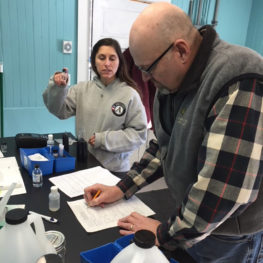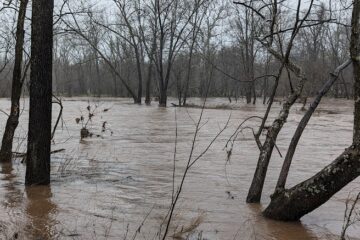The Department of Environmental Protection has formally proposed adding 749 miles of streams—many in our watershed–to the Category 1 (C1) list. C1 streams get special treatment to protect their water quality. In a very disappointing development, the Hunterdon County Freeholders are threatening to fight these improvements to water protection. https://www.newjerseyhills.com/hunterdon_review/news/freeholders-fear-negative-economic-impact-from-new-stream-rules-conservationists/article_ce6c5c6d-d392-58ce-a003-aee936c3cb57.html
 I’m surprised by the comments by both RTMUA and the Freeholders that they couldn’t find the data on which the rule proposal is based. DEP acknowledged in the rule documents and at the public stakeholder meeting that they relied on two sources for their data: DEP’s ambient monitoring network and Raritan Headwaters. Raritan Headwaters has conducted stream monitoring in Hunterdon County for over 25 years. We share our data with the DEP every year and it is publicly available on their website. I know, because I search our data using DEP’s database. If they couldn’t find the data on DEP’s website, a simple call to DEP or to Raritan Headwaters would have solved the problem. I can’t speak for DEP, but we did not receive one inquiry from the RTMUA or the Hunterdon Freeholders.
I’m surprised by the comments by both RTMUA and the Freeholders that they couldn’t find the data on which the rule proposal is based. DEP acknowledged in the rule documents and at the public stakeholder meeting that they relied on two sources for their data: DEP’s ambient monitoring network and Raritan Headwaters. Raritan Headwaters has conducted stream monitoring in Hunterdon County for over 25 years. We share our data with the DEP every year and it is publicly available on their website. I know, because I search our data using DEP’s database. If they couldn’t find the data on DEP’s website, a simple call to DEP or to Raritan Headwaters would have solved the problem. I can’t speak for DEP, but we did not receive one inquiry from the RTMUA or the Hunterdon Freeholders.
What’s more, Raritan Headwaters holds a State of Our Watershed conference every year. At that event, we present the stream monitoring results for our entire watershed, including Hunterdon County. The event is open to the public and we invite the Freeholders of all three of our region’s counties. A few Hunterdon Freeholders have attended in the past, although not recently.
There’s a saying in basketball that you miss 100% of the shots you don’t take. In this case, the Freeholders missed 100% of the data they didn’t look for.
The proposed additions to the C1 listings are good policy based on good science and they are years overdue. They will require those who discharge pollutants into our streams, like the RTMUA, to be more mindful of their operations. RTMUA will not be able to increase the amount of pollutants they discharge. That will be very good news for the 1.5 million New Jersey residents who rely on our watershed for clean drinking water. Will it force local decision makers to be more cognizant of the impacts of their development decisions on the health of water supplies? Yes. And that’s good policy.



